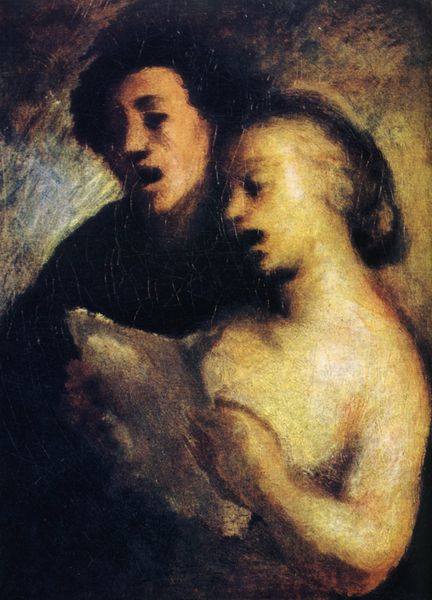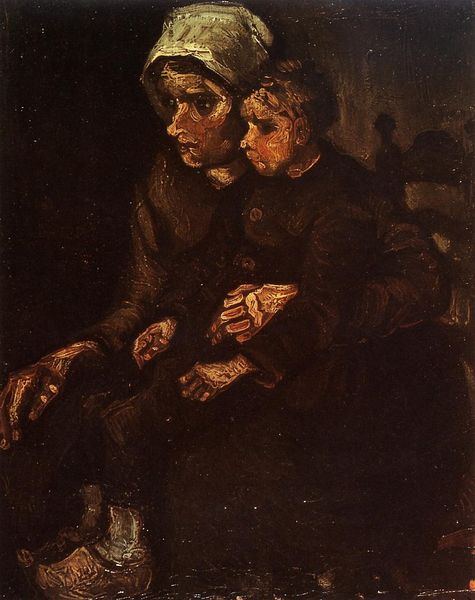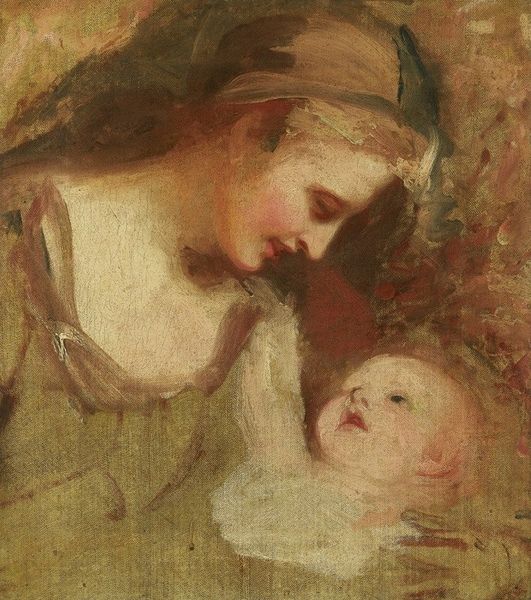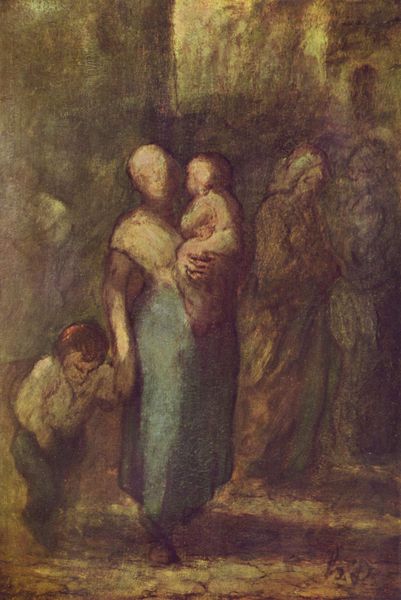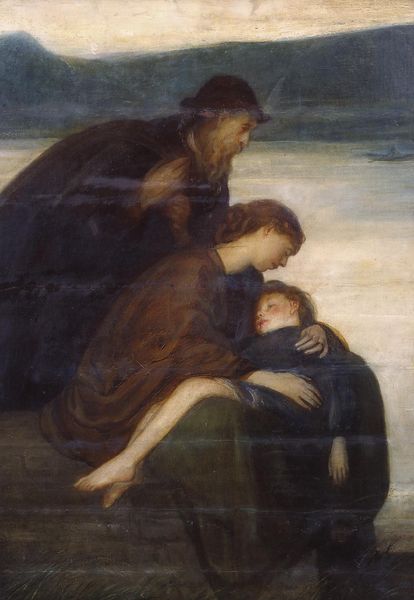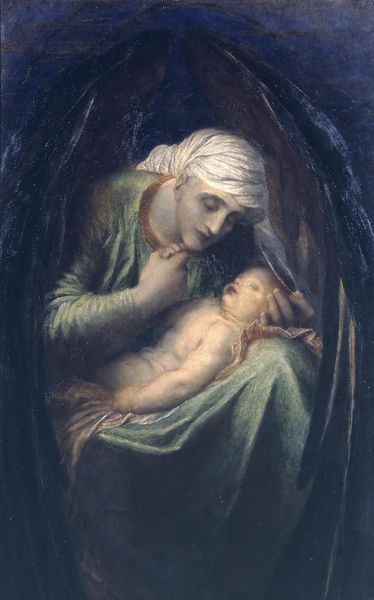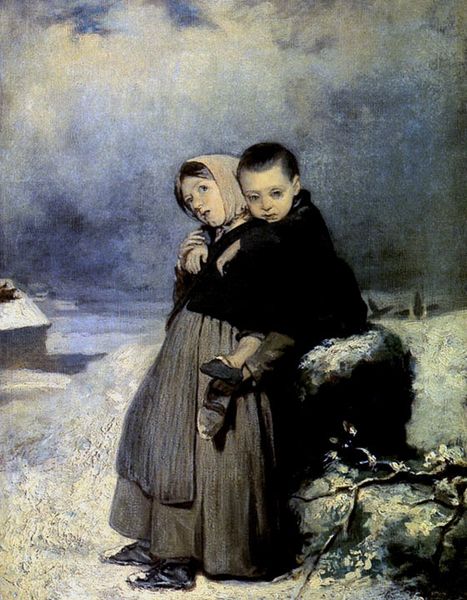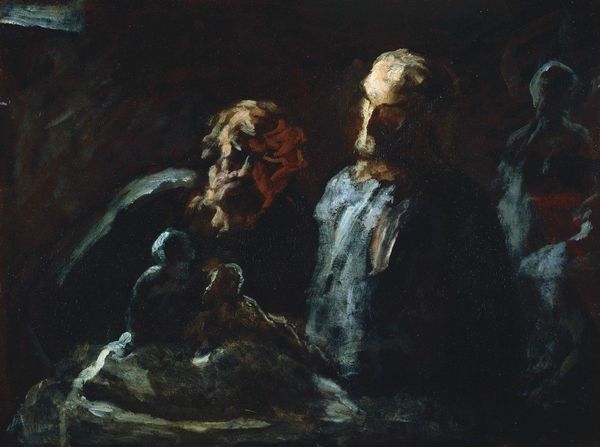
oil-paint, impasto
#
portrait
#
oil-paint
#
oil painting
#
impasto
#
romanticism
Copyright: Alekos Kontopoulos,Fair Use
Editor: Here we have "Grandchild" by Alekos Kontopoulos, likely rendered in oil paint given the rich textures and impasto visible. It's an intimate scene, really quite touching, with a somewhat melancholic tone. I am particularly interested in how this scene reflects ideas around Romanticism and family – What is your reading of it? Curator: It's a study in contrasts, isn't it? Look at the labour evident in the rendering – the thick impasto almost evokes the physical work inherent in family relationships, the 'making' of a life. Then consider the implied social context, especially through the grandmother’s clothing; that simple head covering tells a story about her role, perhaps economic circumstances. What do you make of the child’s gaze? Editor: The child looks lost in thought, a certain innocence perhaps. I hadn’t considered the clothing so specifically, though. Curator: Think about the production of materials too: where did the pigment come from? The canvas? Whose labor went into that production? It complicates the romantic vision, bringing in a material reality often obscured. Romanticism often idealizes, but examining the materials anchors it. Does seeing it through a material lens change your perspective? Editor: It certainly adds a new layer! I was so focused on the emotion that I missed how much the materials themselves contribute to the narrative. Curator: Precisely. We are not just seeing emotion but witnessing a material expression of a complex social bond. Perhaps family itself is "made" through these kinds of emotional exchanges and acts of labor. Editor: Thank you for pointing that out. I’m definitely going to pay closer attention to the materiality of art from now on. Curator: Likewise! You helped me focus on how personal connections intertwine with wider economic conditions of making.
Comments
No comments
Be the first to comment and join the conversation on the ultimate creative platform.

